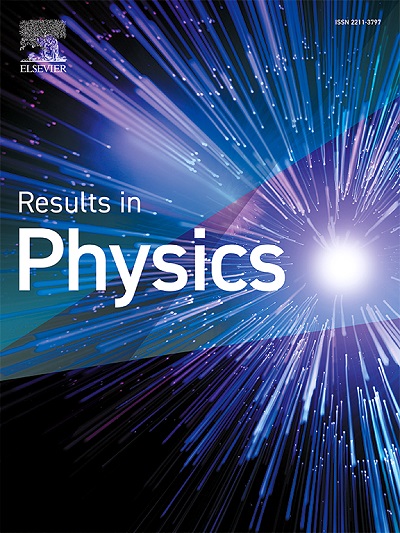Tuning the optoelectronic properties of GaAs/AlxGa1−xAs core/shell tetrapod quantum dots with a single dopant
IF 4.6
2区 物理与天体物理
Q2 MATERIALS SCIENCE, MULTIDISCIPLINARY
引用次数: 0
Abstract
This study investigates the optical properties of a novel core–shell tetrapod nanostructure composed of a GaAs core and an AlGaAs shell. Our focus is on understanding how its shape, geometry, and external factors influence its optical evolution. The aluminum concentration, , within the shell serves as a crucial parameter, directly controlling the confinement well depth, and our analysis employs the finite element method (FEM). Specifically, we investigated the influence of dopant position along the () axis and aluminum concentration on the first three energy levels. We found that increasing the dopant distance from the electron and raising the aluminum concentration both contribute to an increase in the energy levels, attributed to a deeper confinement well. Additionally, we examined the linear, non-linear, and total optical absorption coefficient (OAC) and total refractive index change (RIC) for the two low-lying energy transitions 12 and 23. The results reveal a blueshift and a decrease in amplitude for the 12 transition as the aluminum concentration increases. Expanding on previous experimental results, this research highlights the potential of these structures for groundbreaking applications in nanoelectronics and next-generation solar cells.
用单一掺杂剂调谐GaAs/AlxGa1−xAs核/壳四足量子点的光电性能
本文研究了一种由GaAs核心和AlxGa1−xAs壳层组成的新型核壳四足体纳米结构的光学性质。我们的重点是了解它的形状、几何形状和外部因素如何影响它的光学演变。壳内铝浓度x是一个关键参数,直接控制约束井深度,我们的分析采用有限元法(FEM)。具体来说,我们研究了沿(Oz)轴的掺杂位置和铝浓度对前三个能级的影响。我们发现,增加掺杂剂与电子的距离和提高铝浓度都有助于提高能级,这归因于更深的约束阱。此外,我们还研究了1→2和2→3两个低空能量跃迁的线性、非线性、总光吸收系数(OAC)和总折射率变化(RIC)。结果表明,随着铝浓度的增加,1→2跃迁发生蓝移,幅度减小。在之前的实验结果的基础上,这项研究强调了这些结构在纳米电子学和下一代太阳能电池中的突破性应用潜力。
本文章由计算机程序翻译,如有差异,请以英文原文为准。
求助全文
约1分钟内获得全文
求助全文
来源期刊

Results in Physics
MATERIALS SCIENCE, MULTIDISCIPLINARYPHYSIC-PHYSICS, MULTIDISCIPLINARY
CiteScore
8.70
自引率
9.40%
发文量
754
审稿时长
50 days
期刊介绍:
Results in Physics is an open access journal offering authors the opportunity to publish in all fundamental and interdisciplinary areas of physics, materials science, and applied physics. Papers of a theoretical, computational, and experimental nature are all welcome. Results in Physics accepts papers that are scientifically sound, technically correct and provide valuable new knowledge to the physics community. Topics such as three-dimensional flow and magnetohydrodynamics are not within the scope of Results in Physics.
Results in Physics welcomes three types of papers:
1. Full research papers
2. Microarticles: very short papers, no longer than two pages. They may consist of a single, but well-described piece of information, such as:
- Data and/or a plot plus a description
- Description of a new method or instrumentation
- Negative results
- Concept or design study
3. Letters to the Editor: Letters discussing a recent article published in Results in Physics are welcome. These are objective, constructive, or educational critiques of papers published in Results in Physics. Accepted letters will be sent to the author of the original paper for a response. Each letter and response is published together. Letters should be received within 8 weeks of the article''s publication. They should not exceed 750 words of text and 10 references.
 求助内容:
求助内容: 应助结果提醒方式:
应助结果提醒方式:


